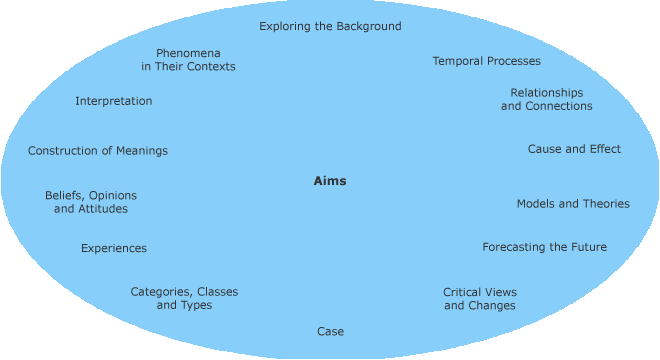Aims

At the beginning of a research project, you must set an aim for the research by selecting a problem, setting the limits of the problem and creating an argument for researching the problem. Essentially your aim is to solve the problem during the research project. Discussing the motivation and aims of research forms the starting points for the research process. At the beginning of the research process both reasons and the aims of the study form the research problem. You can divide the problem into sub-problems and later combine them into research questions.
When setting the aim and forming the research problem, you must discuss the type of information (new knowledge) the research project will produce. The new knowledge is the aim of the research. The research aim acts as a guide, enabling you to ask certain types of questions about the problem. The interactive graphic above shows typical aims in humanistic research. The links in the picture are the types of methods researchers usually use in solving research problems and explain how the philosophy of science provides support for certain problems.
